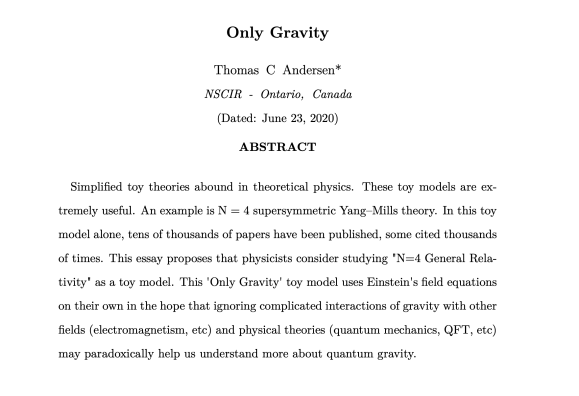I will show with a few simple equations how it could be that electrons and electromagnetic theory can be constructed from GR alone.
1) The electron is some sort of GR knot, wormhole or other ‘thing’, which has one property – its mass is moving from 0 to 2*me in a wave pattern. Well actually, the mass does not have to all b oscillating, it only changes the math slightly.
2) Due to the birkhoff theorem, the gravitational potential at any time is given by the amount of mass inside a certain radius.
3) Due to 2) above, we can use the simple gravitational formula to describe the potential.
This potential exerts a force that depends on the frequency of the varying mass, taking the derivative to get the slope of the potential holding r steady:
With the mass changing, we have monopole graviational waves emanating (and incoming, since the universe is not empty), from such a structure.
The big assumption here is of course the varying mass of the electron. Where does the mass go? The obvious answer is through some sort of wormhole, so perhaps there is another electron somewhere else with the opposite phase of mass. Shades of the Pauli exclusion principle.
There are lots of places on the internet where one can find electron models where the the electron is modeled on some standing wave, which is what this really amounts to, since electrons would have a huge force on them if the incoming and outgoing are not balanced.




 Andersen, T. C. on ORCID
Andersen, T. C. on ORCID



